Laid down 11 June 1931 Launched 1 September 1932 Draft 5.82 m | Namesake Achilles Commissioned 10 October 1933 Construction started 11 June 1931 Length 169 m Beam 17 m | |
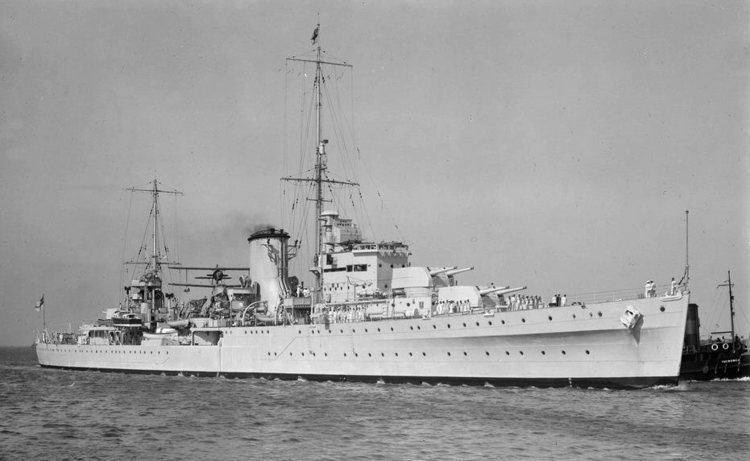 | ||
Out of service Loaned to Royal New Zealand Navy 1 October 1936 | ||
Hmnzs achilles 70
HMNZS Achilles was a Leander-class light cruiser which served with the Royal New Zealand Navy in the Second World War, the second of five in the class. Originally constructed by the Royal Navy, she was loaned to New Zealand in 1936 before formally joining the new Royal New Zealand Navy in 1941. She became famous for her part in the Battle of the River Plate, alongside HMS Ajax and HMS Exeter and notable for being the first Royal Navy cruiser to have fire control radar, with the installation of the New Zealand-made SS1 fire-control radar in June 1940.
Contents
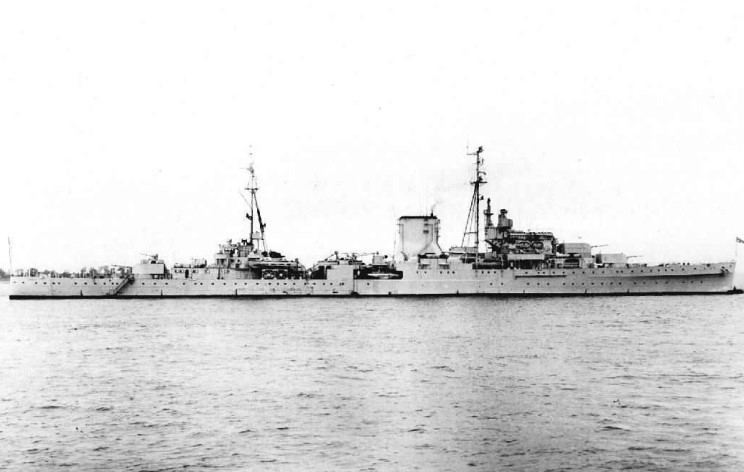
After Second World War service in the Atlantic and Pacific, she was returned to the Royal Navy. She was sold to the Indian Navy in 1948 and recommissioned as INS Delhi. She was scrapped in 1978.
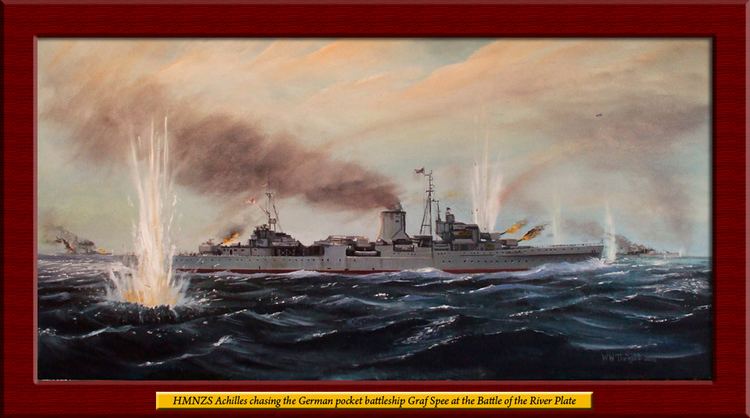
Design
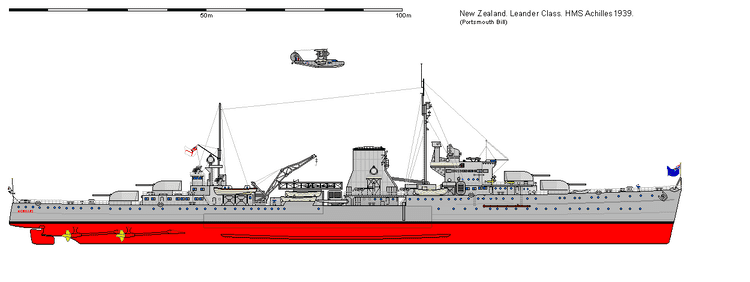
She was the second of five ships of the Leander-class light cruisers, designed as effective follow-ons to the York class. Upgraded to Improved Leander-class, she could carry an aircraft and was the first ship to carry a Supermarine Walrus, although both Walruses were lost before the Second World War began. At one time she carried the unusual DH.82 Queen Bee which was a radio-controlled unmanned aircraft, normally used as a drone.
Service

Achilles was originally built for the Royal Navy, and was commissioned as HMS Achilles on 10 October 1933. She would serve with the Royal Navy's New Zealand Division from 31 March 1937 up to the creation of the Royal New Zealand Navy, into which she was transferred in September 1941 and recommissioned HMNZS Achilles. Her crew was approximately 60 per cent from New Zealand.
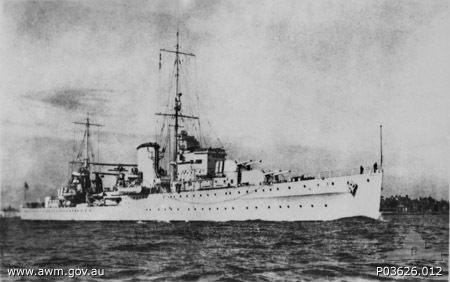
At the outbreak of the Second World War, Achilles began patrolling the west coast of South America looking for German merchant ships, but by 22 October 1939 she had arrived at the Falkland Islands, where she was assigned to the South American Division under Commodore Henry Harwood and allocated to Force G (with Exeter and Cumberland).
Battle of the River Plate
In the early morning of 13 December 1939, a force consisting of Achilles, Ajax and Exeter detected smoke on the horizon, which was confirmed at 06:16 to be a pocket battleship, thought to be the German battleship Admiral Scheer but which turned out to be Admiral Graf Spee. A fierce battle ensued, at a range of approximately 20 kilometres (11 nmi). Achilles suffered some damage. In the exchange of fire, four crew were killed, her captain, W. E. Parry, was wounded; 36 of Graf Spee’s crew were killed.
The range reduced to about 4 nautical miles (7.4 km) at around 07:15 and Graf Spee broke off the engagement around 07:45 to head for the neutral harbour of Montevideo which she entered at 22:00 that night, having been pursued by Achilles and Ajax all day. Graf Spee was forced by international law to leave within 72 hours. Faced with what he believed to be overwhelming odds, the captain of Graf Spee, Hans Langsdorff, scuttled his ship rather than risk the lives of his crew.
Pacific theatre
Following the Atlantic battle, Achilles returned to Auckland, New Zealand on 23 February 1940, where she underwent a refit until June. After German raider activity in the South Pacific during 1940 Achilles escorted the first Trans-Tasman commercial convoy, VK.1, composed of Empire Star, Port Chalmers, Empress of Russia, and Maunganui leaving Sydney 30 December 1940 for Auckland. After Japan entered the war, she escorted troop convoys, then joined the ANZAC Squadron in the south-west Pacific.
Achilles met HMAS Canberra, flagship of Rear-Admiral John G. Crace, and HMAS Perth in December 1941 to form an escort for the Pensacola Convoy.
While operating off New Georgia Island with US Navy forces, a bomb damaged her X turret on 5 January 1943. Between April 1943 and May 1944 Achilles was docked in Portsmouth, England for repairs. Her damaged X turret was replaced by four QF 2 pom poms in a quadruple-mount. Sent back to the New Zealand Fleet, Achilles next joined the British Pacific Fleet in May 1945 for final operations in the Pacific War.
Indian Navy
After the war, Achilles was returned to the Royal Navy at Sheerness in Kent, England on 17 September 1946. She was then sold to the Indian Navy and recommissioned on 5 July 1948 as INS Delhi. She remained in service until decommissioned for scrap in Bombay on 30 June 1978. In 1968 she was present at the granting of independence to Mauritius representing the Indian Government together with the Royal Navy frigate Tartar under Captain Cameron Rusby. As part of the scrapping her Y turret was removed and presented as a gift to the New Zealand government. It is now on display at the entrance of Devonport Naval Base in Auckland.
Achilles played herself in the film The Battle of the River Plate in 1956.
